Land Invertebrates
Media
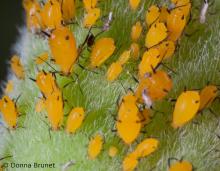
Species Types
Scientific Name
More than 1,300 species in North America north of Mexico
Description
Aphids are common, small, soft-bodied insects that suck plant juices. To see them well, you probably need a hand lens, but the damage they do to plants can be all too obvious!
Media
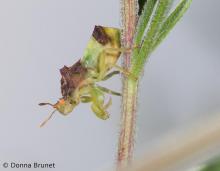
Species Types
Scientific Name
Phymata spp. and others in subfamily Phymatinae (ambush bugs)
Description
Ambush bugs are a subfamily of assassin bugs. They’re chunky, small insects with powerful grasping forelegs. They hide motionless in flowers waiting for prey to venture near.
Media
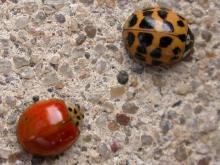
Species Types
Scientific Name
Harmonia axyridis
Description
The multicolored Asian lady beetle was imported to America to help control aphids. It is now well established and has become a nuisance, especially in fall when large numbers of them enter homes for shelter.
Media
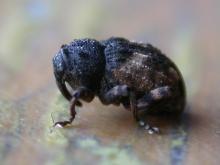
Species Types
Scientific Name
About 2,500 species in North America north of Mexico
Description
Weevils are plant-eating beetles with a characteristic long, down-curving snout. The antennae are clubbed and elbowed. There are thousands of weevil species.
Media
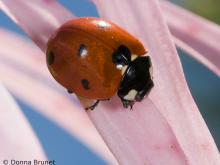
Species Types
Scientific Name
Nearly 500 species in North America north of Mexico
Description
Lady beetles are beloved for many reasons. Farmers like the way they devour injurious aphids and scale insects. Everyone else appreciates their bright colors and shiny, compact bodies.
Media

Species Types
Scientific Name
Scudderia furcata
Description
The fork-tailed bush katydid reaches about 1¾ inches long. It is usually leafy green and is most common in bushes, thickets, and other shrubby areas. It is most active after dusk. The call is a simple "tsip!" given every few seconds.
Media
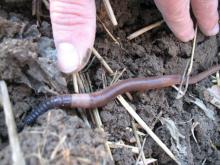
Species Types
Scientific Name
Amynthas and Metaphire spp.
Description
Jumping worms are invasive earthworms that are native to east Asia. They are spreading in North America and cause problems for plants and soils. They thrash violently when disturbed.
Media
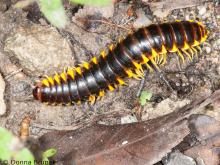
Species Types
Scientific Name
8 tribes, with about 23 genera, in North America north of Mexico
Description
Millipedes in family Xystodesmidae often have bright colors that serve as a warning to potential predators that they may secrete foul or toxic substances.
Media

Species Types
Scientific Name
Amblycorypha oblongifolia
Description
The oblong-winged katydid is one of many species in the katydid family. Although it is usually green in most places, some populations made up of pink-form individuals.
Media

Species Types
Scientific Name
Chrysochus auratus
Description
The shiny, iridescent dogbane beetle is one of Missouri's most beautiful insects. As the name indicates, this beautiful beetle feeds on dogbanes.
See Also
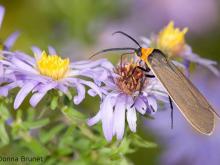
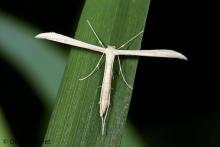

Media

Species Types
Scientific Name
Cisseps fulvicollis
Description
The yellow-collared scape moth is more often “orange-collared.” And whether you think it looks more like a firefly or a wasp, it’s still a moth!
Media

Species Types
Scientific Name
Nearly 150 species in North America north of Mexico
Description
Slim, delicate plume moths are instantly recognizable by their T-shaped silhouette, long legs, and muted shades of tan and brown. It can be hard to separate the various species.
Media

Species Types
Scientific Name
Pyrrharctia isabella
Description
Not many people know the adult Isabella tiger moth when they see one, but we’re all acquainted with its caterpillar, the woolly worm, or woolly bear.
About Land Invertebrates in Missouri
Invertebrates are animals without backbones, including earthworms, slugs, snails, and arthropods. Arthropods—invertebrates with “jointed legs” — are a group of invertebrates that includes crayfish, shrimp, millipedes, centipedes, mites, spiders, and insects. There may be as many as 10 million species of insects alive on earth today, and they probably constitute more than 90 percent all animal species.





















